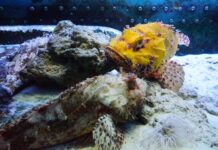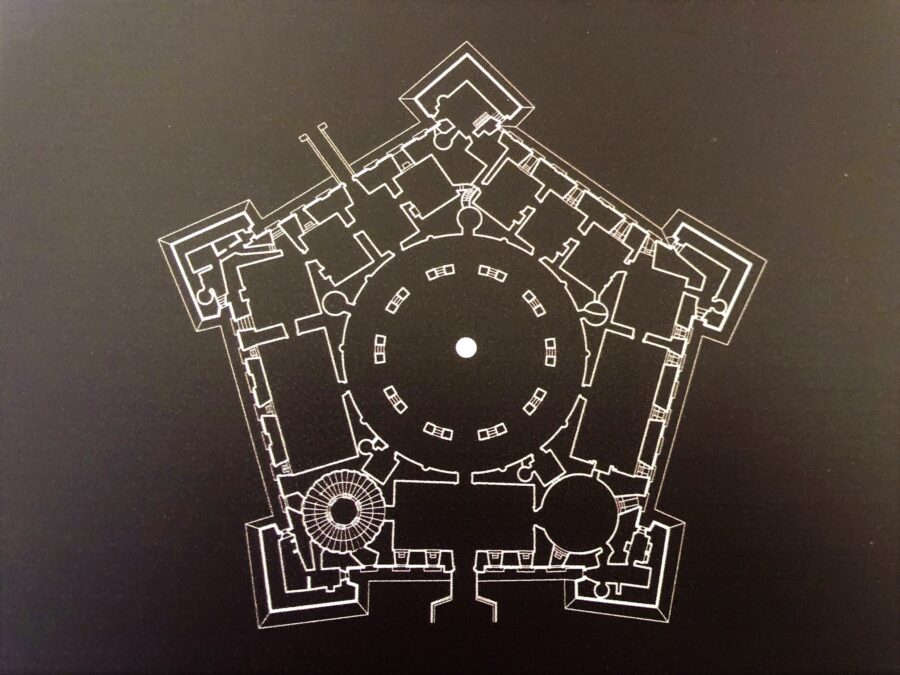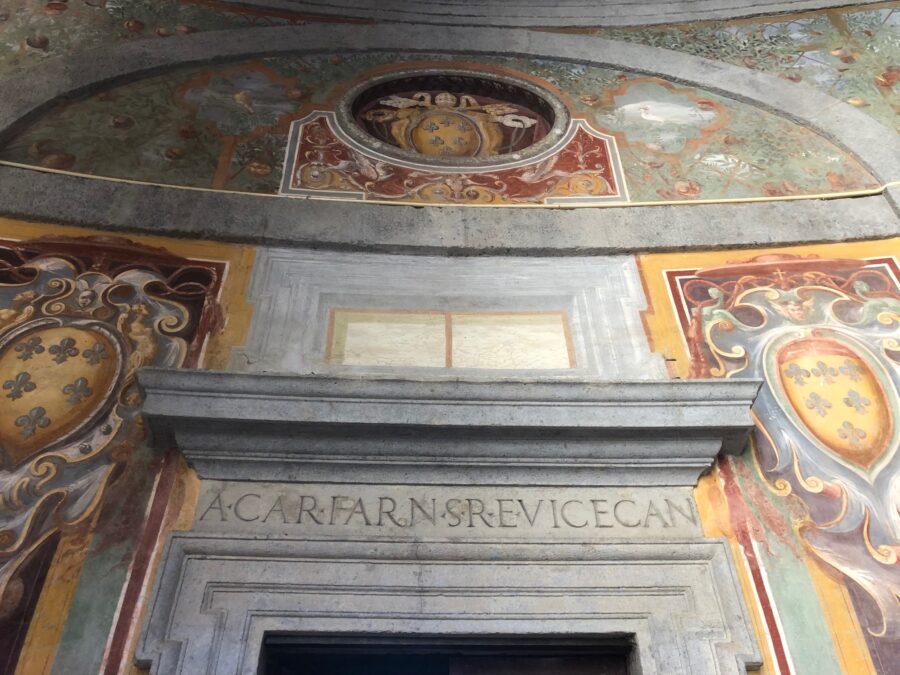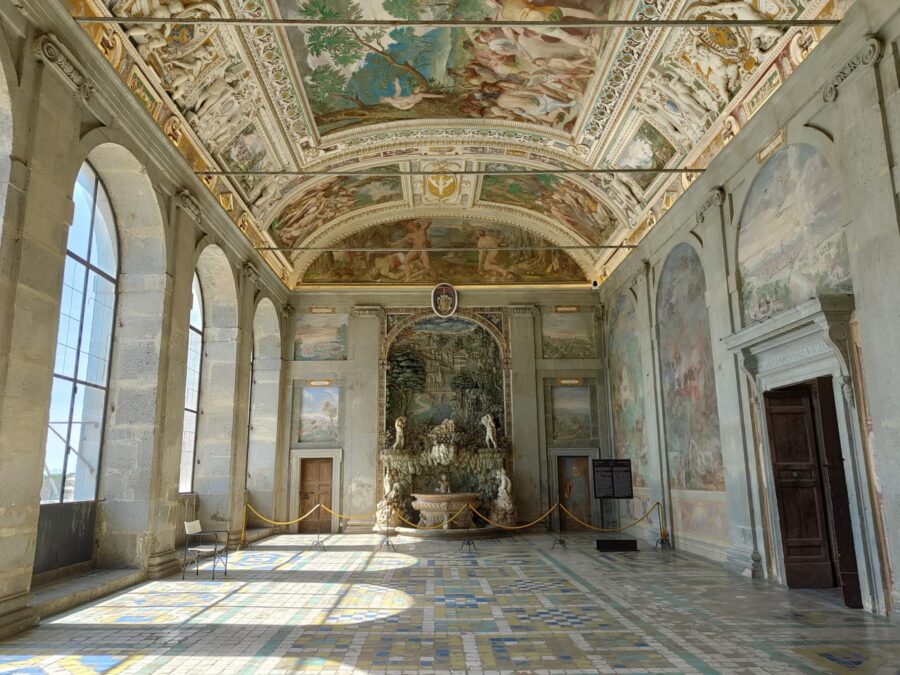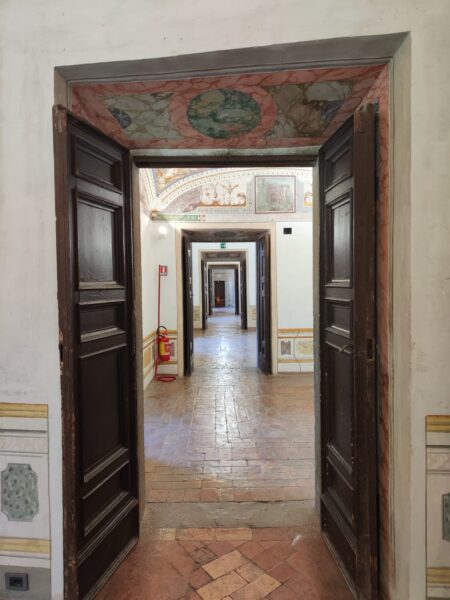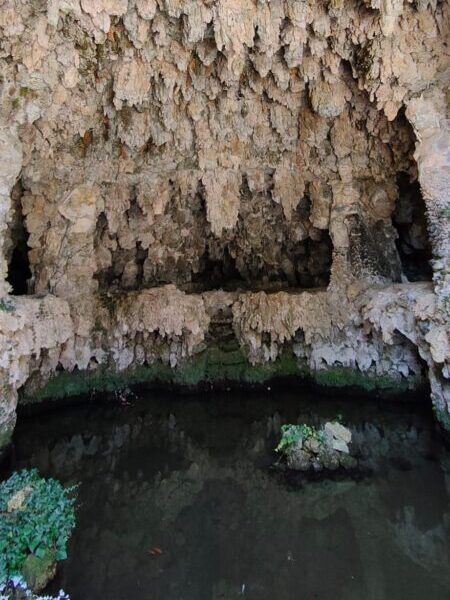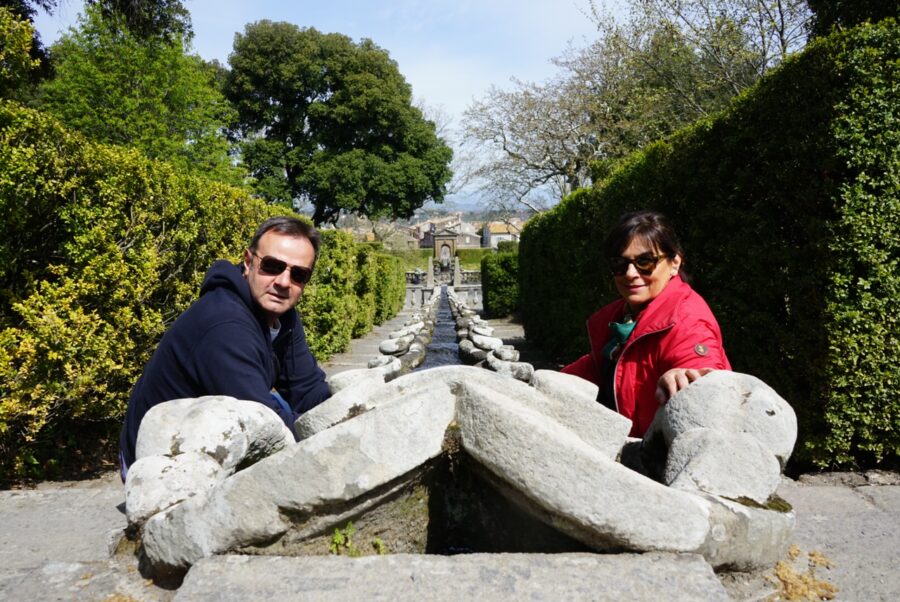Gardens, villas and palaces are essential stops in an itinerary of Viterbo’s Tuscia. In fact, if the history of the area is closely linked to that of Falisci and the Etruscans, later this land became the preferred area of noble families such as the Farnese but also of the Popes who chose Viterbo as their home at the end of the thirteenth century.
Gardens, frescoes and water features
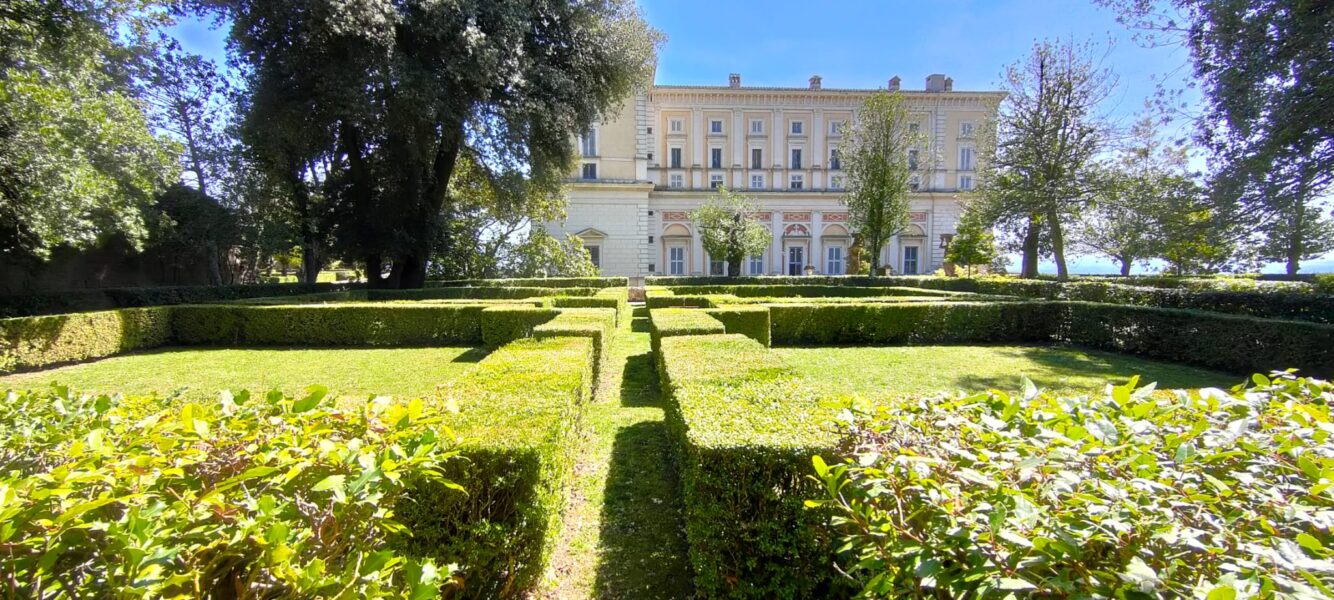
The consequence of this was the flourishing of wonderful palaces and villas with their gardens among the most beautiful in Europe, such as Palazzo Farnese in Caprarola, Villa Lante in Bagnaia, Castello Ruspoli in Vignanello, in an area that also boasts the highest concentration world of historic gardens.

We were unable to include everything in our tour, due to lack of time but also because some places, such as Castello Ruspoli, are only open on weekends. But we did not miss the “unmissable” such as Sacro Bosco in Bomarzo, Palazzo Farnese and Villa Lante.

A true masterpiece is the imposing Palazzo Farnese, vast and elegant like a royal palace despite having the shape of a fortress. Considered one of the best examples of a Renaissance residence, the project for its construction was initially entrusted to Antonio da Sangallo il Giovane by Cardinal Alessandro Farnese il Vecchio.
The works began in 1530, but were suspended with the election of the cardinal to the papal throne as Pope Paul III. They were then taken up by Cardinal Alessandro il Giovane, who entrusted their completion to Jacopo Barozzo da Vignola, who radically modified the original project.

While maintaining the pentagonal plan of the original fortification, the palace was in fact transformed into an imposing residence. In the center, a two-storey circular courtyard was built and Vignola even had the hill cut with stairways in order to isolate it and, at the same time, integrate it harmoniously with the surrounding territory.

Inside, over 6000 square meters of perfectly preserved frescoes enrich the dozens of rooms arranged on the two noble floors: a decoration so rich and innovative for the time that it also served as a model for some rooms of the Vatican.

We are talking about the wonderful Sala del Mappamondo that inspired the Gallery of Geographical Maps in the Vatican, after Pope Gregory XIII visited the palace in 1578.

The visit, accompanied by a continuous feeling of amazement and wonder, starts from the large square, from where you can admire the imposing facade and from which two more flights of stairs lead to the main entrance with the bridge, which was once a drawbridge.
The pentagonal perimeter inscribes a circle, that of the courtyard with two superimposed arcades. This is the fulcrum of Palazzo Farnese where the rear upper part was where the family lived and was not to be seen from below. The frescoed walls are the work of Antonio Tempesta: note the 46 coats of arms of all the families with which the Farnese were related.
The splendid rooms of the residence are divided between the summer and winter seasons. In the Winter Apartment there is a series of five rooms, located in the south-east area, the sunniest one, frescoed by Federico Zuccari. Instead, the frescoes in the Room of Spring are owed to Taddeo Zuccari.
Vignola’s great masterpiece is the Scala regia, which takes up the helical staircase by Bramante in the Vatican, but is embellished with splendid frescoes and coupled Doric columns that make it monumental. The Loggia of Hercules is imposing, which exalts the hero’s deeds linked to the territory: according to legend, he would have driven a spear into the ground, generating Lake Vico. From the loggia you enter the circular Chapel designed by Vignola and decorated by Federico Taddeo.

We then come to the amazing Hall of Farnese splendor, in which the golden period of the Farnese is exalted, when Pope Paul III made the family an international power and became related to the major courts of Europe. A curiosity? The room was also a set of the famous international series “The Medici”.
The optical illusion of the vault, designed by Vignola, with painted Corinthian columns supporting false architraves, is striking in the Anteroom of the Council. Another unique room is that of the Torrione, the most intimate area of Alessandro and so called because it was created in the only Tower of the Palace.

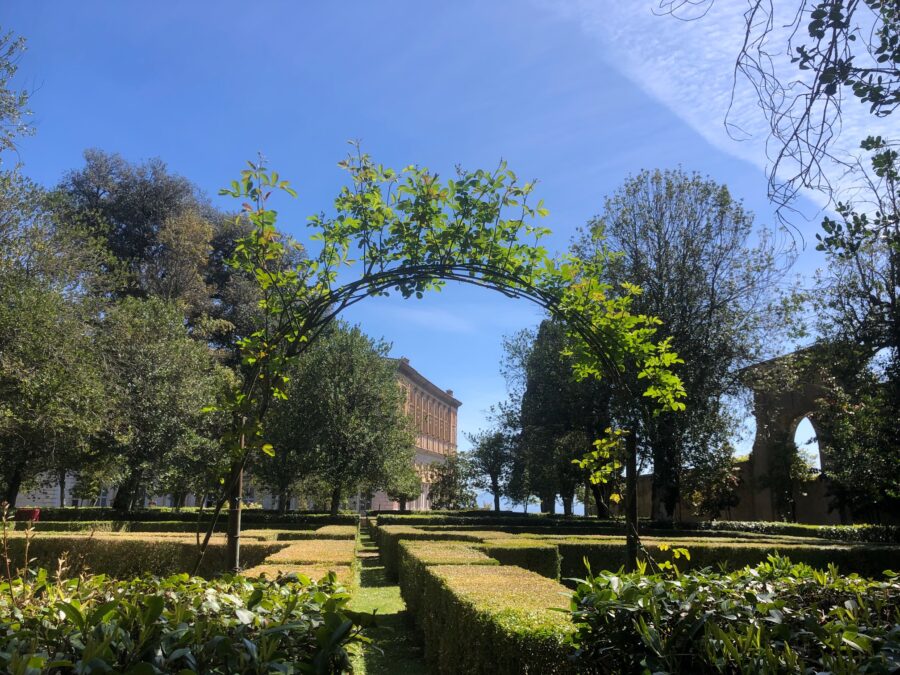
From this area of the building you can access the two square gardens designed by Vignola, the summer garden and the winter garden, which represent the secret gardens with the Nymphaeum of Venus, the Grotta dei Satiri and the Nymphaeum of the Shepherd.

Another of the famous gardens of Tuscia, considered one of the most beautiful in the world, is that of Villa Lante in Bagnaia. These too are due to a famous cardinal of the 16th century, Giovan Francesco Gambara, who chose to build his Villa delle Delizie here, having fun creating water games and majestic terraces in the gardens.


It is no coincidence that we are only talking about gardens as from the interiors of Villa Lante we could only admire the loggias of the Gambara and Montalto buildings because for the complete and guided tour, which also includes the rooms on the upper floors, there were no more available places.

We did not regret too much as it is the gardens that are a real feast for the senses! Together with those of Bomarzo they are considered the most famous Italian Mannerist surprise gardens of the sixteenth century.

The villa is attributed to Vignola but the differences with Villa Farnese in Caprarola are notable even if both were built in the same area, in the same period and in the same architectural style.
Construction began in 1511, but was only completed in 1566 on commission from Cardinal Gianfrancesco Gambara. It became “Villa Lante” in the 17th century, when it was bought by Ippolito Lante Montefeltro della Rovere, Duke of Bomarzo.

Enchanting and of great charm, the gardens are enriched by numerous fountains set on as many terraces facing the town. The hydraulic system that supplies water to the fountains and waterfalls was designed by Tommaso Ghinucci, while the structure of the gardens was entrusted to the famous architect Pirro Ligorio.

The most spectacular part is the one in front of the two Casini where in the center stands the complex Fontana dei Mori, with life-size statues that support the heraldic mountain surmounted by a star, the Montalto coat of arms.
Perfectly symmetrical, like all the decorations made with boxwood bushes, are the four basins that complete this grandiose work by Giambologna. Behind the two Casini there are the equally spectacular Fountain of Candles, the Table of the Cardinal and the Fountain of the Giants.

The water that flows into it comes from the characteristic Chain Fountain, which is made up of a series of mini waterfalls placed in the center of a staircase. Above this waterfall are the Dolphin Fountain and the Deluge Fountain.
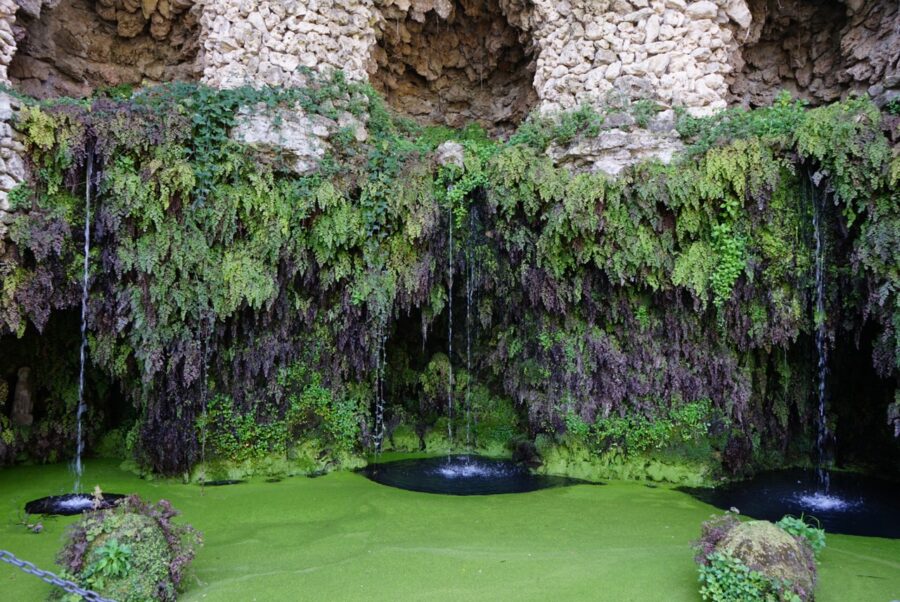
A small wood extends around this series of fountains, terraces, grottos and statues, while in front of it stands the town of Bagnaia, one of the most beautiful and fascinating places in Lazio.
Finally, we like to point out that the ticket price to enjoy these wonders is very low: for each villa 5 euros are well spent!
Palazzo Farnese
Piazza Farnese, 1 – Caprarola (Vt)
Tel. +39 0761 646052
palazzofarnese@beniculturali.it
Villa Lante
Via Jacopo Barozzi, 71 – Bagnaia (Vt)
Tel. +39 0761 288008
drm-laz.villalante@beniculturali.it




